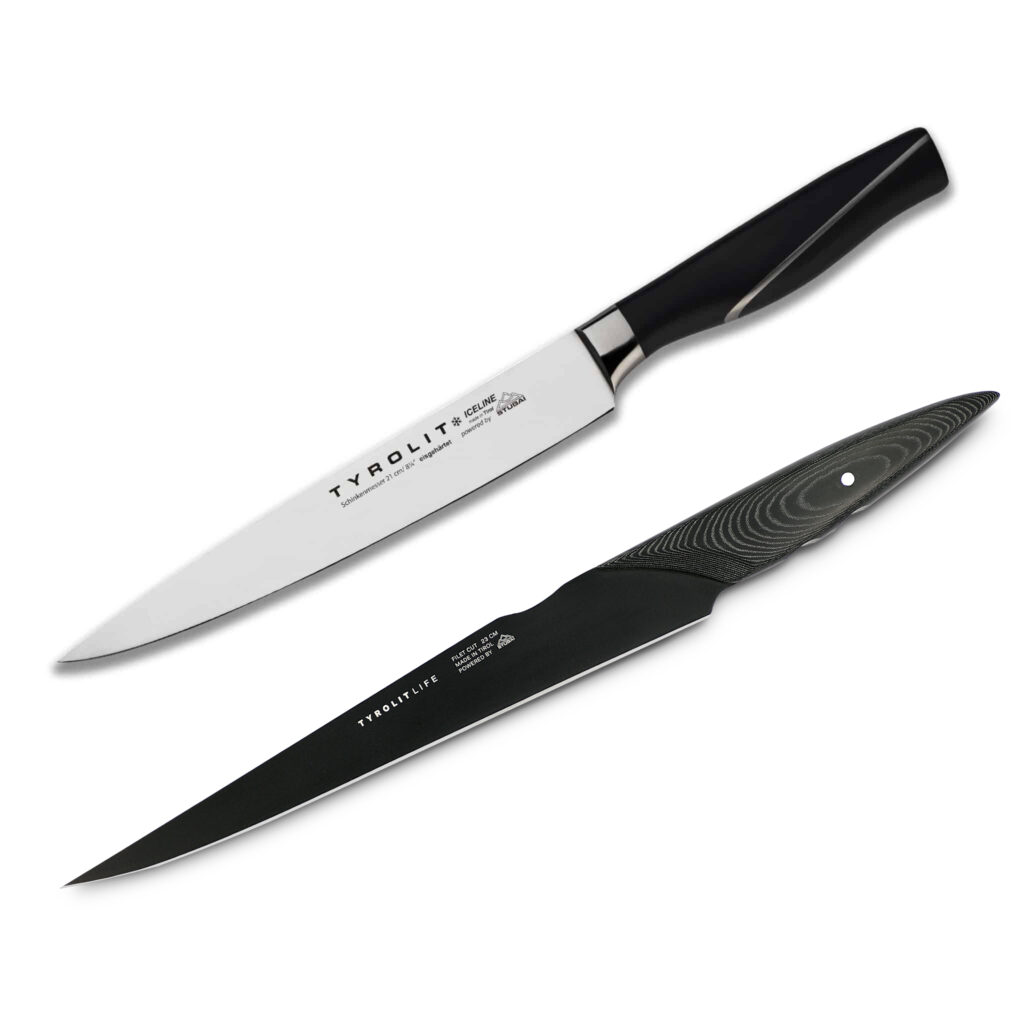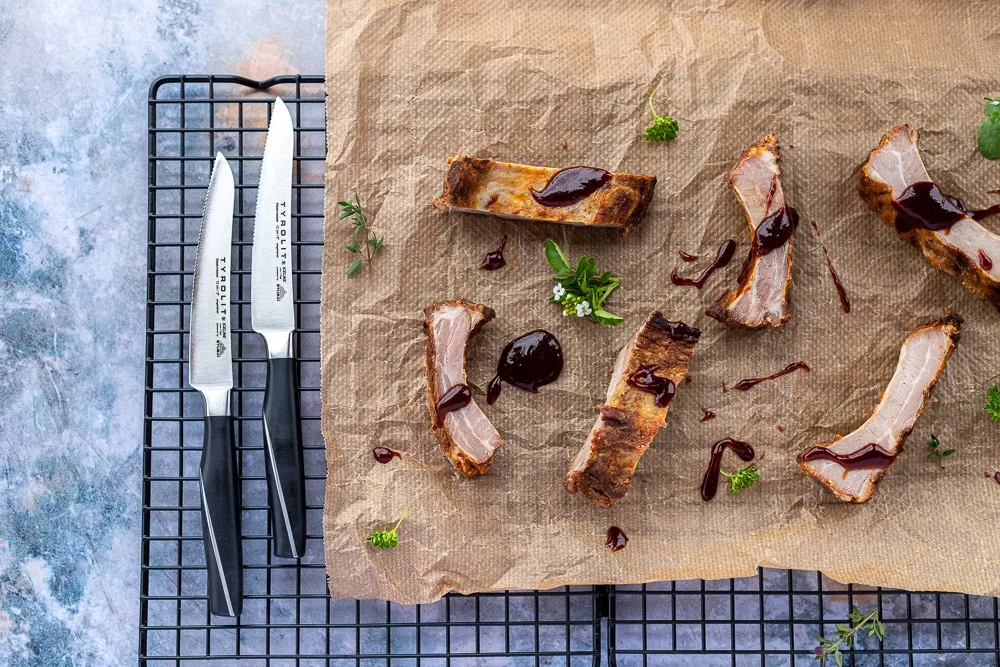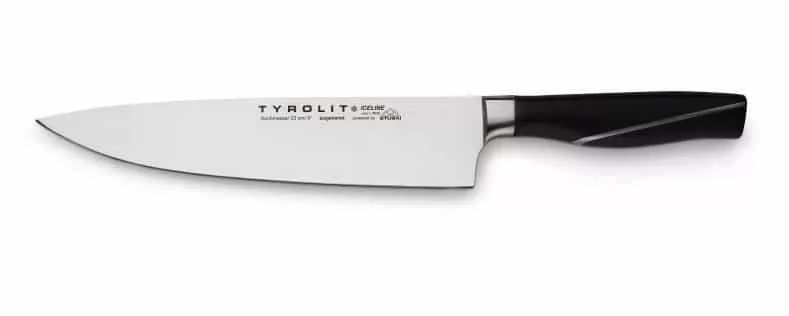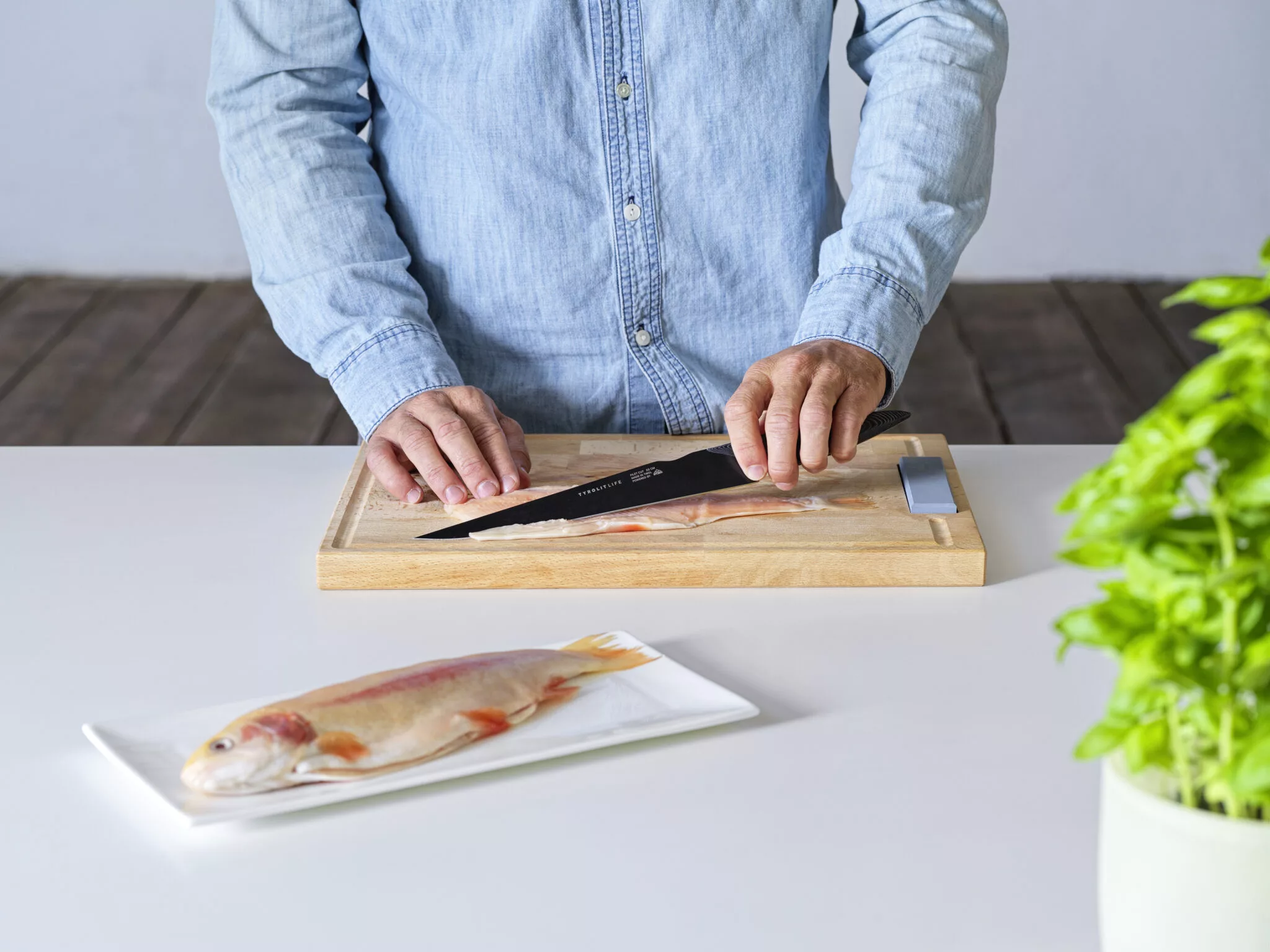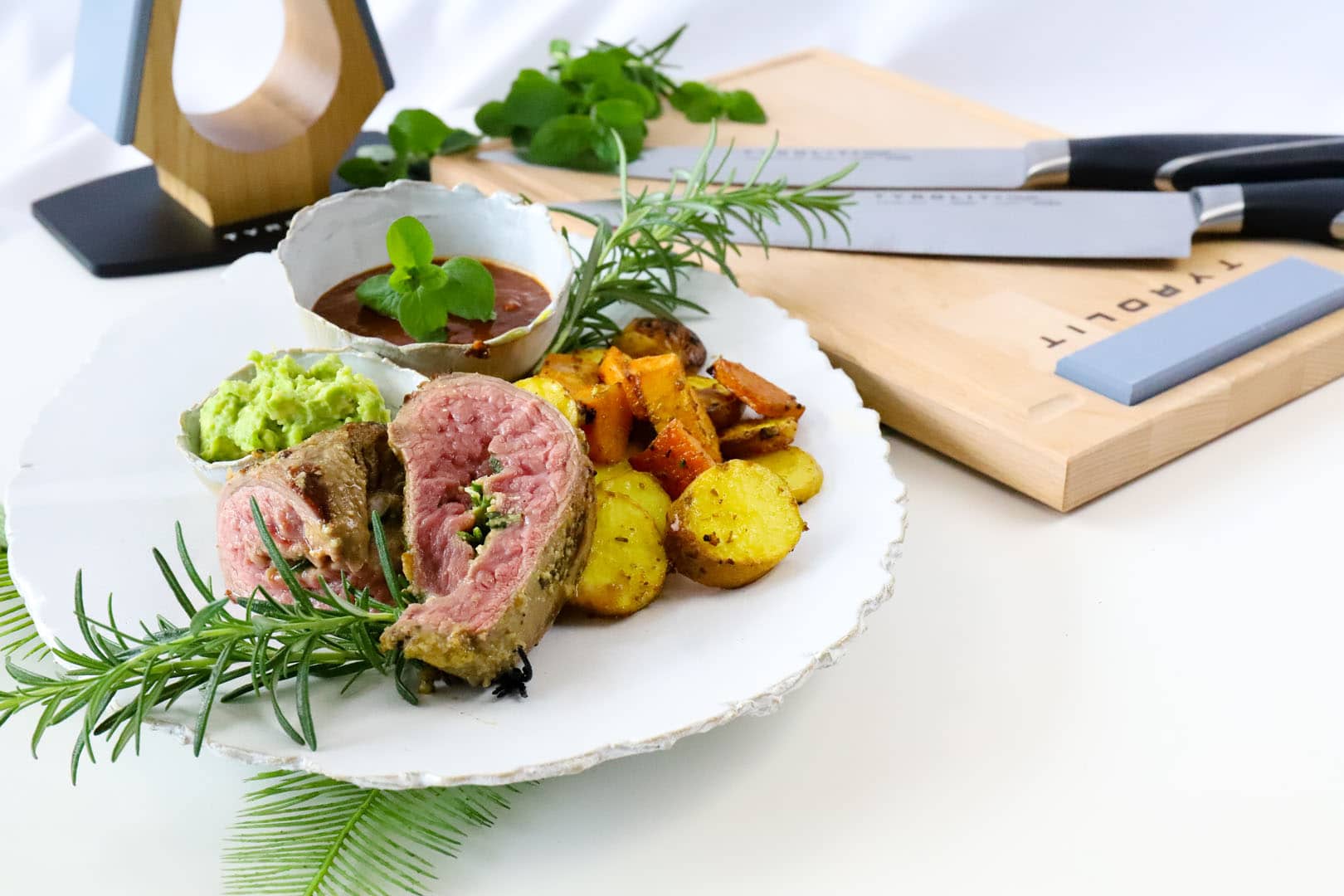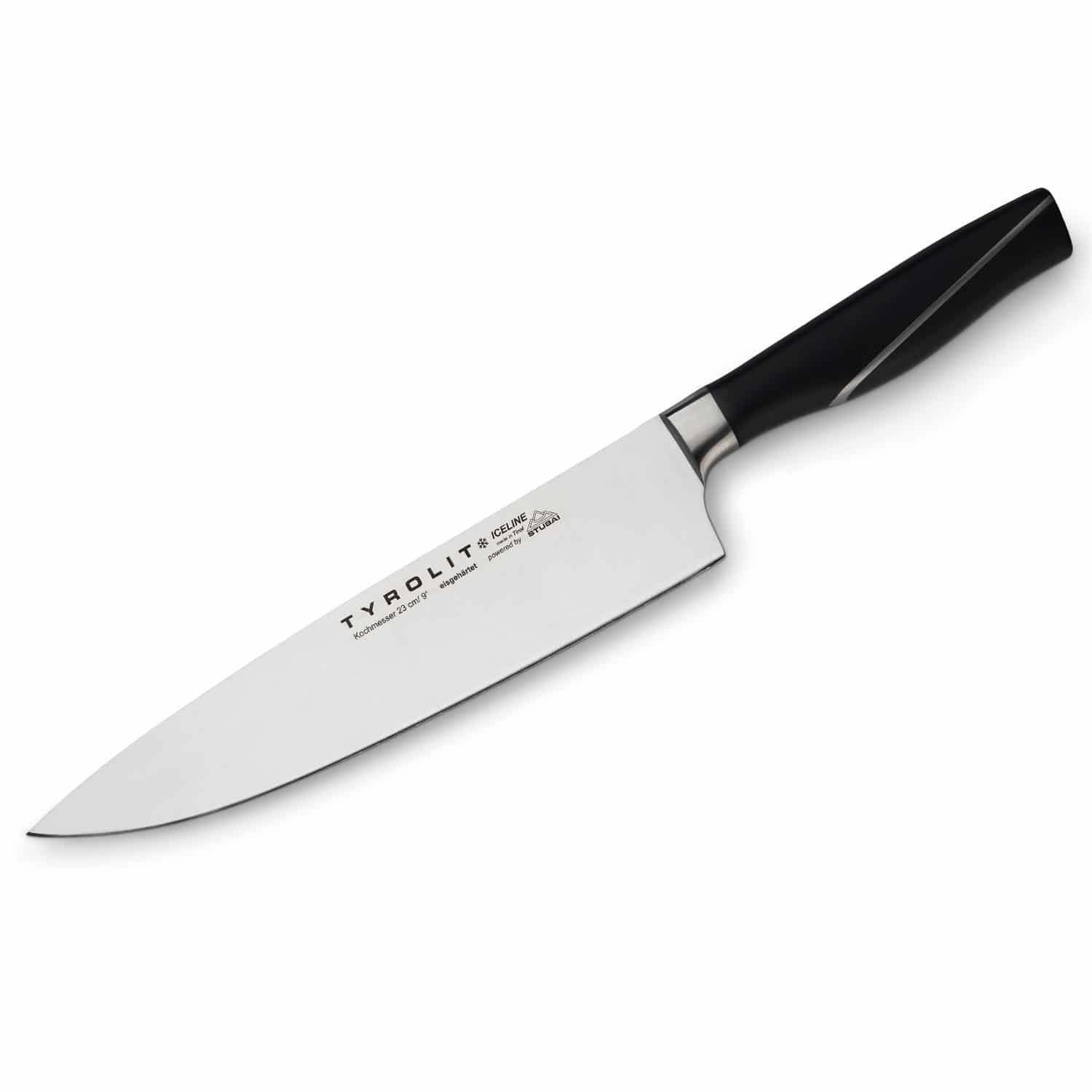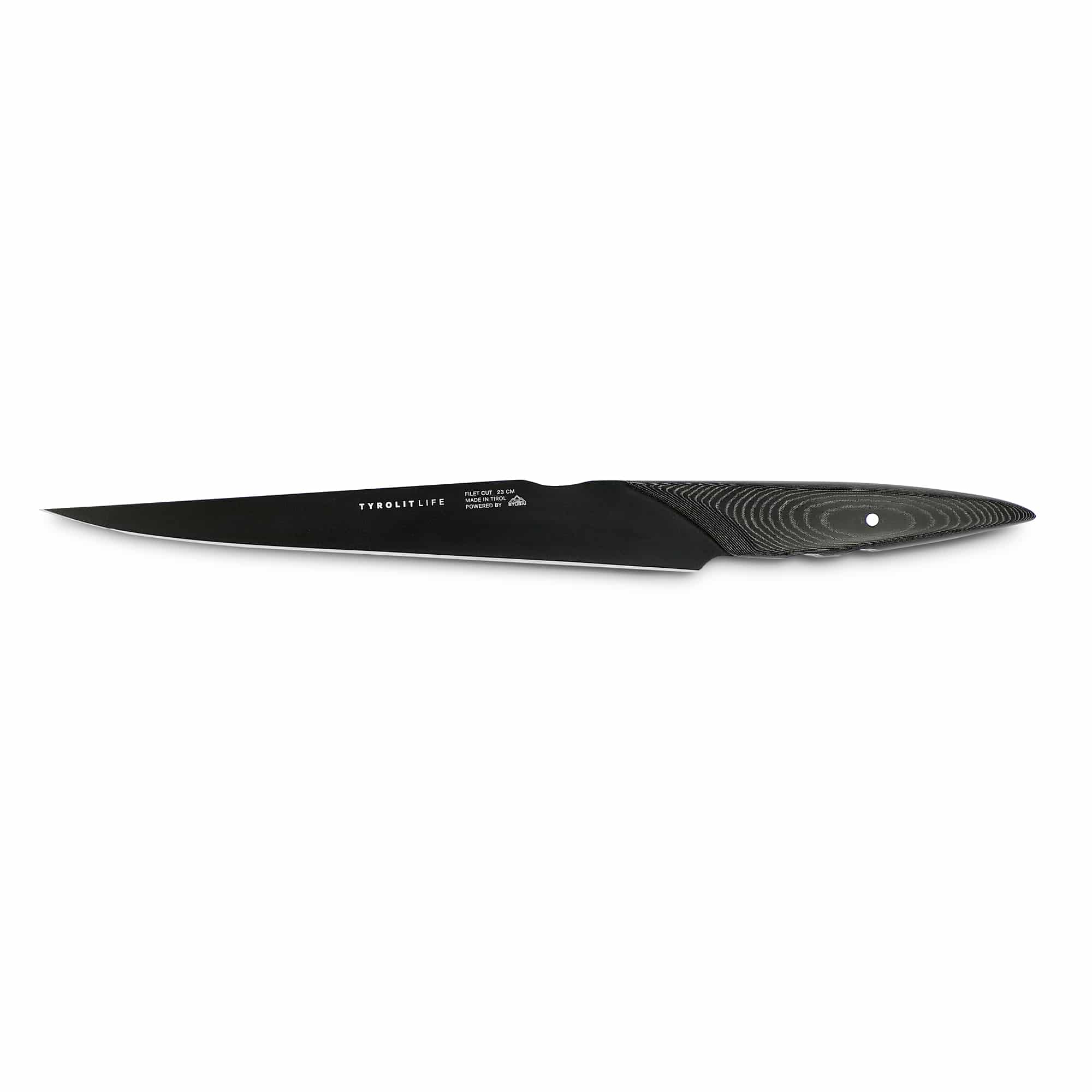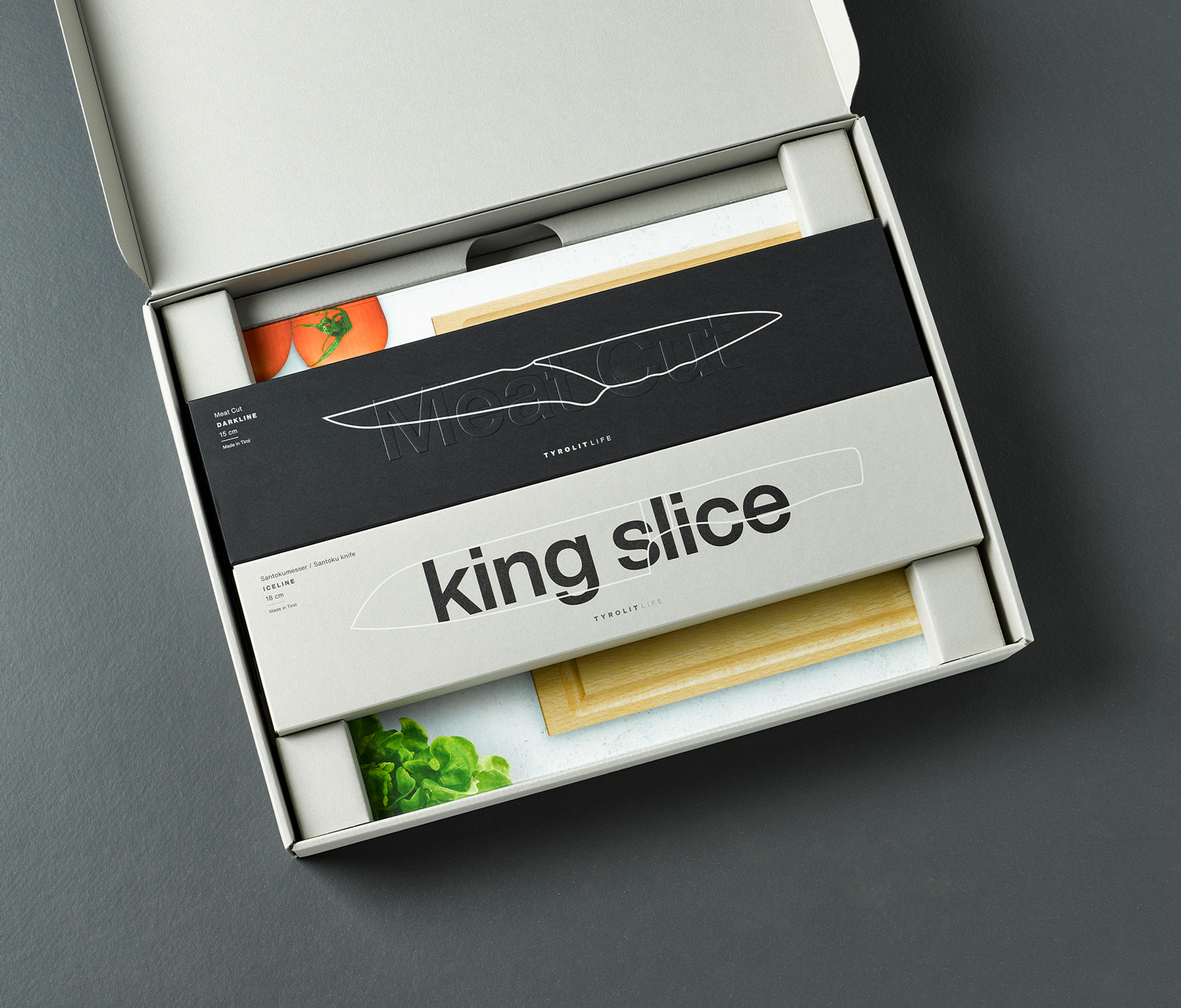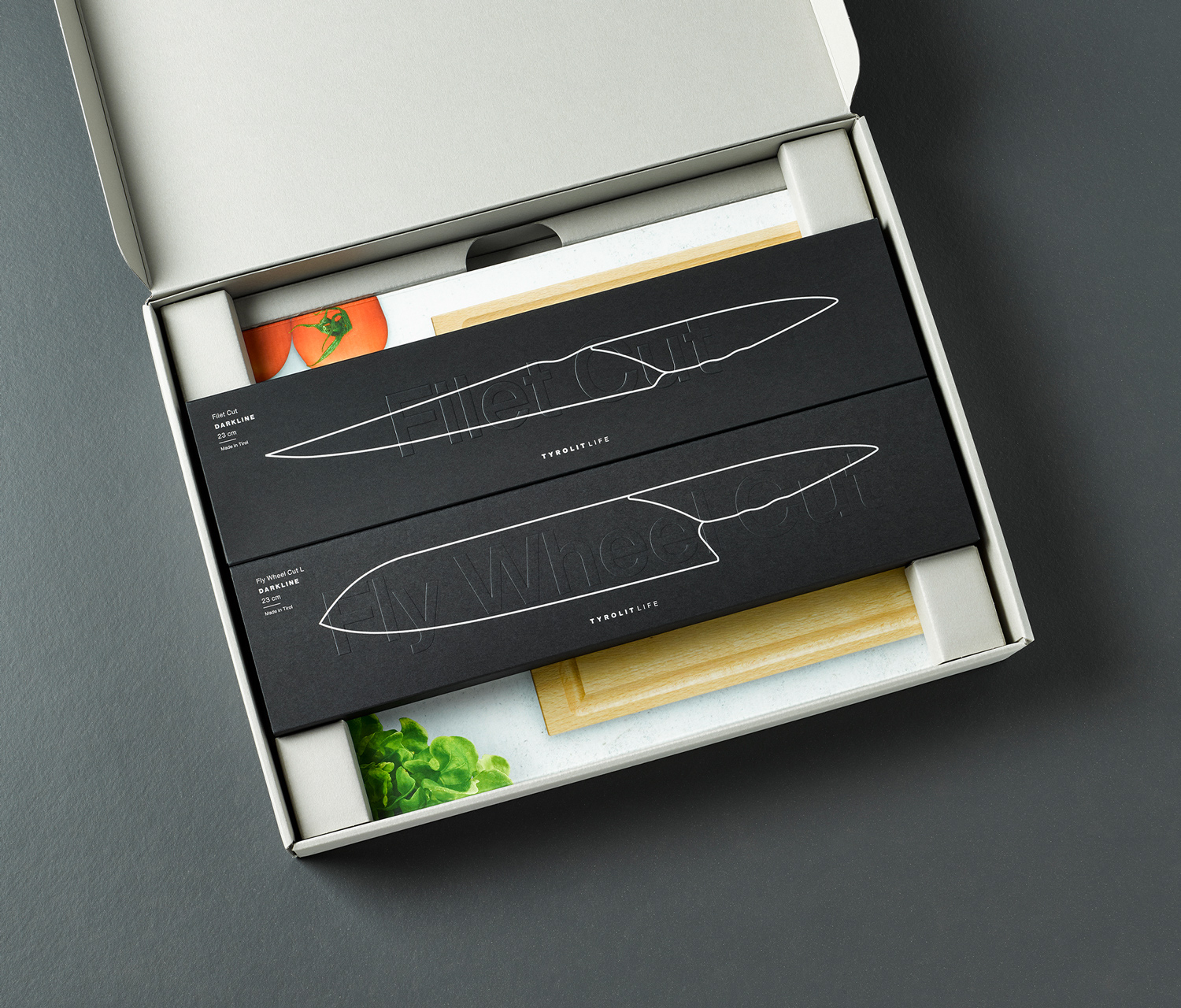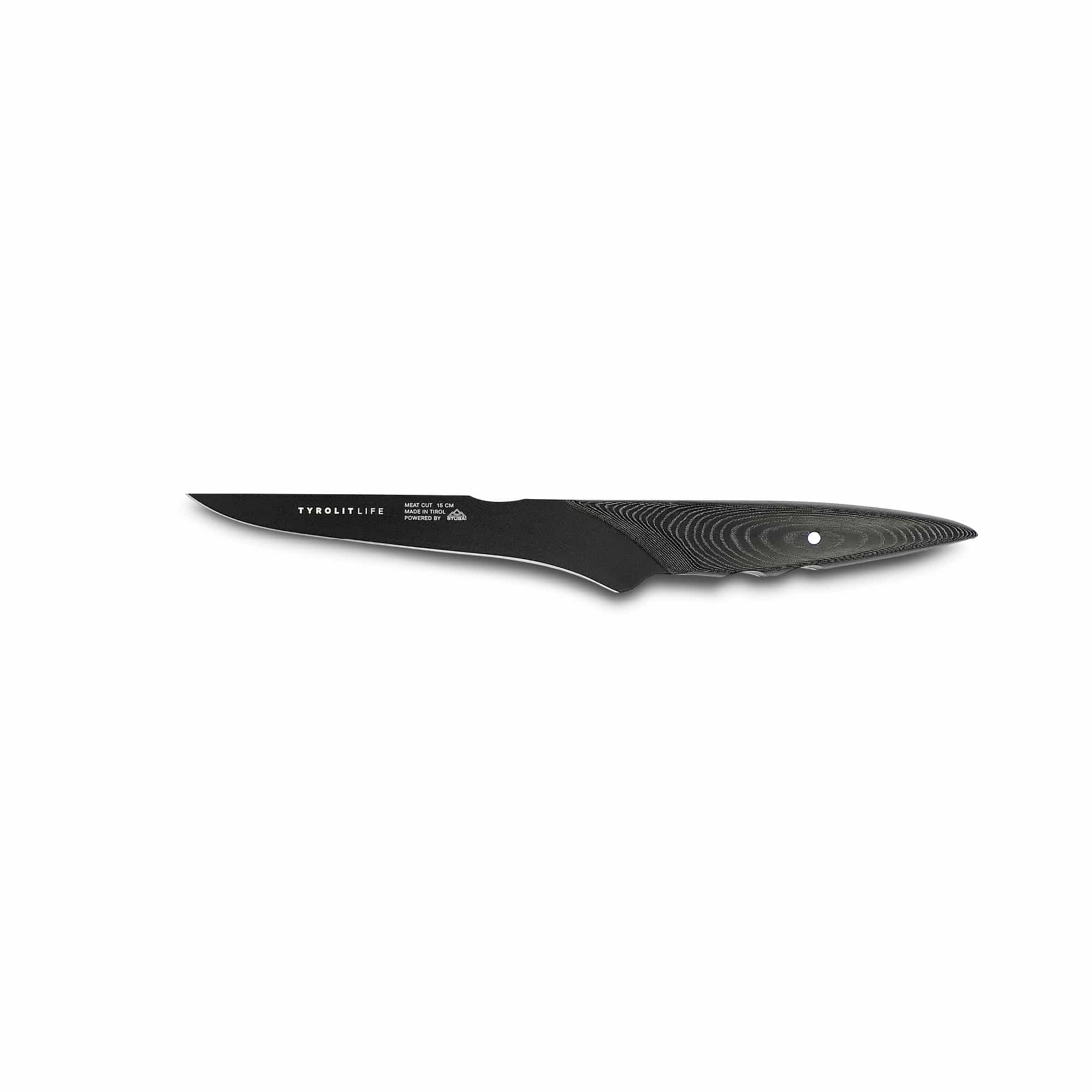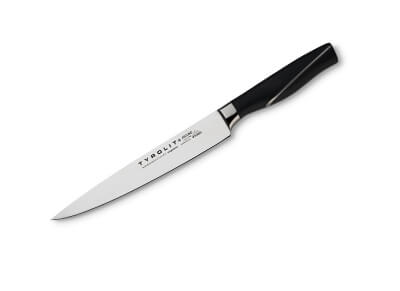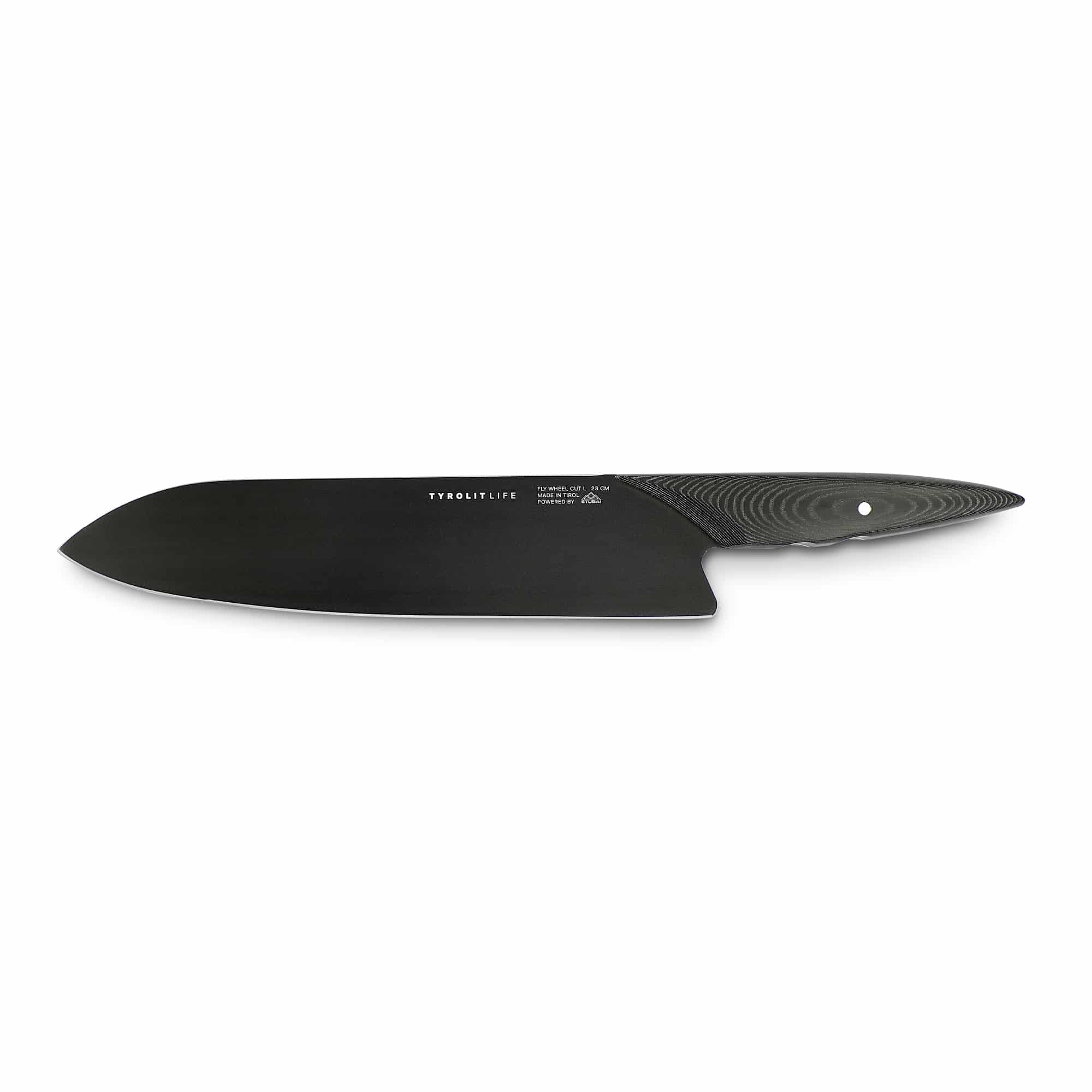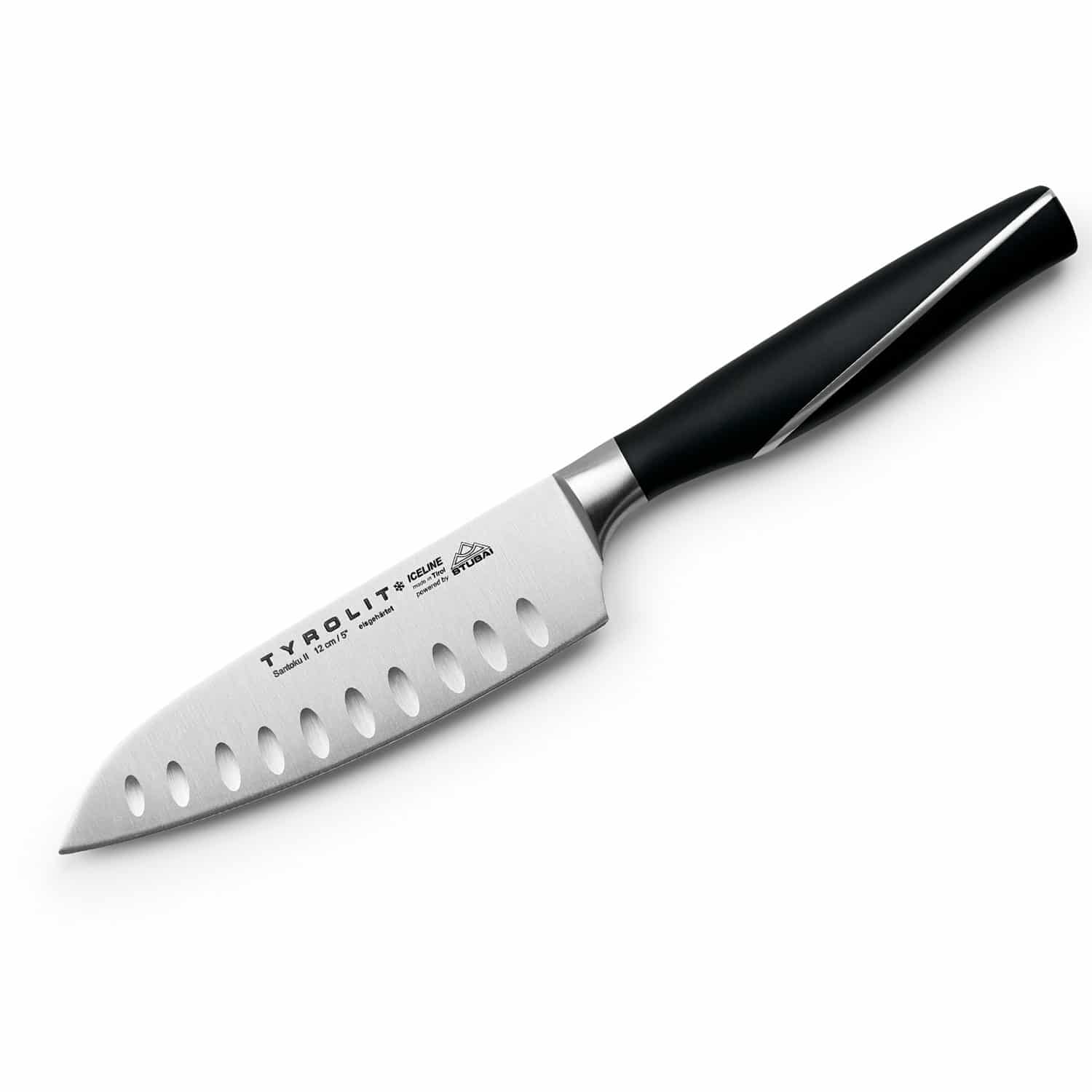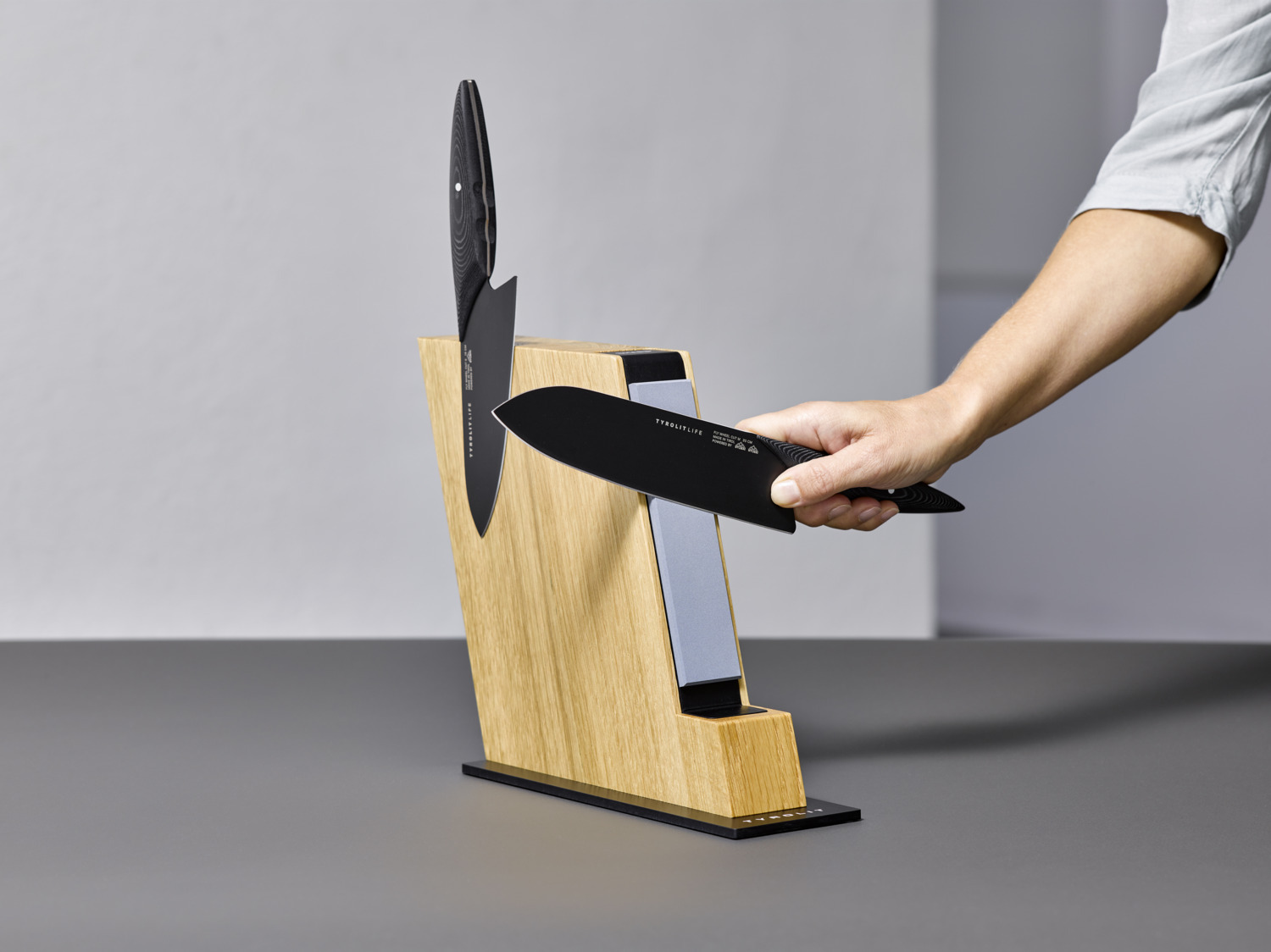The Meat Knife – A Comprehensive Overview

A meat knife is an indispensable kitchen tool, specially designed for slicing, carving, and portioning meat. Its sharp blade and various designs enable precise cuts, significantly easing the preparation of meat dishes
In this comprehensive post, we will dive into the different types of meat knives, materials, applications and care instructions to fully understand the importance of this kitchen utensil.
The Different Types of Meat Knives
Meat knives are indispensable in the kitchen and there are a variety of types, each designed for specific kitchen tasks. Here we take a look at some of the most common types of meat knives.
Ham Knife
Ham knives are known for their impressive ability to cut wafer-thin slices of ham. The long, narrow blade allows for precise cuts that go perfectly with a fine appetizer or a delicious sandwich.
Imagine serving an elegant dinner and presenting a selection of delicate Serrano ham, artfully sliced into the thinnest slices. The ham knife makes it possible.
Carving Knife
Carving requires skill and a carving knife is the tool of choice. With its long, thin blade, you can cut roasts, poultry, and even large fish fillets into even, appealing pieces.
A carving knife is a must-have for your duck roast or other festive occasions where a perfectly sliced meat makes the evening perfect.
Boning Knife
The boning knife is all about precision and efficiency. It has a narrow, curved blade that comes perfectly close to bones and allows for the removal of meat without wasting it. Imagine preparing a juicy ribeye steak and wanting to rid it of excess fat and bone. The boning knife supports you with the highest precision.
Filleting knife
Filleting knives are the professionals’ choice when it comes to precisely filleting fish. The flexible blade glides along the fish bones, enabling the valuable meat to be separated from the bone
Let’s say you’re an avid angler and you’re returning from a fresh salmon fishing trip. With a filleting knife, you can conjure up the perfect fillets for a successful dinner.
Filleting knife
Boning knives are closely related to filleting knives but often feature a wider and more robust blade. They are versatile and suitable not just for filleting fish but also for cutting meat. If you are a hobby cook who enjoys experimenting with new recipes, a boning knife will become an indispensable companion in your kitchen.
Steak Knife
Steak knives specialize in a very special task – cutting juicy steaks. With their sharp serrated blades, they effortlessly cut through the meat without crushing it. A high-quality steak knife is the right companion for your barbecue evening. It ensures that every bite is a treat.
Steak Knives – A “Must-Have” for All Meat Lovers
Do you enjoy eating steak? Whether rare, medium or well done. Do you have a steak knife? Discover why this kitchen tool is a great gift to yourself.
Cleaver
A cleaver is a large and heavy knife. It has a rectangular blade that is wedge-shaped, particularly robust, and about 15 cm long. It is used for chopping and mincing meat, poultry, and fish.
Chef’s knife
Chef knives are the all-rounders in the kitchen and are ideal for cutting meat, but also vegetables and much more. With their wide blade and versatile design, they are an absolute must for amateur chefs and professionals alike.
When you prepare a hearty stew, with a variety of ingredients, the chef’s knife makes it easier to cut and dice meat, vegetables and also herbs.
Utility Knife
An all-purpose knife is a versatile tool that should not be missing in the kitchen. It is perfect for tasks such as peeling fruit, cutting vegetables, or chopping herbs. It can also be used for meat processing, although it is not specifically designed for this purpose like other meat knives.
What is a filleting knife and what is it used for?
A filleting knife, also known as a filleting knife, is an essential utensil in many kitchens, for both amateur and professional chefs. Read all about it!
Types of Edges and Their Importance for the Meat Knife
Meat knives are not only versatile due to their shape and function but also because of their various edge types. The choice of the right edge can significantly influence the knife’s performance and versatility. Here, we provide a brief overview of two common types of edges:
Plain edge
The smooth edge is known for precise cuts and slicing wafer-thin slices. This type of edge enables the carving knife to glide effortlessly through the meat without crushing it
Imagine you want to slice a juicy roast beef into thin slices for serving on a sandwich. A meat knife with a straight edge is the ideal tool for this task, as it provides the necessary precision.
Serrated Edge
The serrated edge, on the other hand, is perfect for effortlessly slicing through meat, especially juicy steaks. The serrated blade gently tears through the meat without squeezing out the juices
This will keep your steak juicy and flavorful. Suppose you are a grill fan and regularly prepare steaks on your grill. A serrated meat knife will help you make perfect cuts without compromising meat quality.
Grillgenuss zum Vatertag
Feiern Sie den Vatertag mit einem besonderen Grillgenuss: Flanksteak gefüllt mit Pesto, serviert mit knusprigen Kartoffelrädern und einem Avocado- sowie BBQ-Dip.
Materials Used for Meat Knives
Meat knives are made of different materials, each with its own advantages and disadvantages. A decisive factor in the choice of material is the hardness of the blade, which is measured in Rockwell hardness C (HRC). A high HRC value means the blade is harder and stays sharp longer. This is especially important for meat knives as they need to be precise and sharp when cutting meat.
Blade Material
There are meat knives made of Damascus steel, which exhibit a unique pattern created by folding and forging multiple layers of steel
Stainless steel, however, is one of the most commonly used materials for meat knives. It is distinguished by its corrosion resistance and hardness. Tyrolit Life offers meat knives starting from HRC 56, made from multiple ice-hardened stainless steel
Handle Material
Regarding the handle part of the knife, meat knives feature handles made from stainless steel, various types of wood (such as olive wood), or plastic. These materials not only vary in grip and aesthetics but also in their practical applications. Stainless steel handles are known for their durability and ease of cleaning. In contrast, wooden handles, including those made from olive wood, offer a warm and natural feel and are prized for their unique grain patterns. Plastic handles, on the other hand, tend to be more cost-effective and are also easy to clean.
The Tyrolit Life handle shells are prefabricated from high-quality Micarta (a very robust and lightweight composite material) and milled three-dimensionally on a multi-axis CNC machine. The handles are given their ergonomic shape by careful grinding and polishing by hand before they are pressed airtight with the steel and undetachably bonded.
The Versatility of Meat Knives
The history of the knife and development of the different specializations is fascinating. A high-quality meat knife is undoubtedly a versatile kitchen tool. Let’s take a closer look and highlight some practical examples from everyday life.
The most obvious area of use for a meat knife is, of course, cutting meat. A meat knife offers the necessary precision, for example, to cut a large roast piece into even and appetizing slices.
Filleting knives are the go-to choice for fish preparation, allowing for quick and precise removal of skin and bones, ensuring the fillet is perfectly prepared. Whether dealing with delicate salmon or sturdy trout, a filleting knife makes quick work of these tasks.
BBQ enthusiasts particularly value a steak knife that easily cuts through meat’s crust without compressing it, ensuring each portion remains juicy and enticing on the plate
If you have to venture to the bones of a piece of meat, a boning knife is the right tool. Whether cutting chicken or preparing ribs, this knife enables precise work and minimizes meat loss.
Care, storage and sharpening of your meat knife
Maintaining a high-quality meat knife is critical to maintaining its performance and longevity. Here's how to properly care for, store, and sharpen your meat knife.
Meat knives and cutting boards: the perfect combination
An important consideration when using meat knives is the cutting board. The right cutting board can significantly extend the lifespan of your knife. The best knife will not remain sharp for long if it is used on the wrong surfaces. Wood is a living material that yields under the knife's edge - these cuts, however, do heal over time.
For example, the Tyrolean knife expert Tyrolit Life offers cutting boards in two different sizes made of oiled beech wood. Beech wood is particularly gentle on the blades, hygienic and robust.
If you find at work that the blade could use some maintenance, then there is even an integrated ceramic sharpening stone here. Following the principle of simplification, Tyrolit Life has combined two essential areas in one tool – the ideal cutting surface and a reliable helper to sharpen knives again directly while cutting.
Additionally, these cutting boards also feature a juice groove. More on the topic of sharpening knives will be discussed later.
Cleaning Tips for Meat Knives: Hand Wash or Dishwasher?
The cleaning of meat knives should always be done with care, as this not only maintains their sharpness but also their hygienic qualities. Here are some tips on how to properly clean your meat knife:
The best method for cleaning meat knives is handwashing. Use warm water and a mild detergent. Be careful to gently wipe the sharp blade to avoid injury. Thoroughly rinse the knife and immediately dry it to prevent water spots and staining. Avoid harsh detergents or abrasive sponges as they can damage the blade. Thus, remember to maintain and clean your knives properly.
You wonder if you can put your meat knife in the dishwasher. However, it is strongly discouraged. The aggressive environment and heat in the dishwasher can not only affect the sharpness of the blade, but also damage the handle and other parts of the knife. In addition, there is a risk that the knife will come into contact with other crockery parts during the washing process and thus become damaged.
The Optimal Storage of Meat Knives
Simply placing your meat knife in a drawer with other knives and cutlery is a "no go". It is absolutely advisable to store it appropriately in a knife block or on a magnetic strip.
Tyrolit Life offers knife blocks with a magnetic holder made of high-quality, local oak wood with an integrated sharpening system.
Magnetic Knife Block – Compelling Arguments and Benefits
A magnetic knife block brings not only aesthetic, but also practical and even hygienic advantages. Why? We'll take a look at that in this post.
Knife Sharpening: The Secret to Sharp Blades
The correct sharpening angle is 15 degrees. To get a perfectly sharpened knife, place it horizontally at the tip of the sharpening stone and pull it several times in a gentle arc from top to bottom. Be sure to evenly traverse the entire blade length from shank to tip.
Tyrolit Life offers different options here. On the one hand, a small, very compact sharpening system, on the other hand, two different versions of an acrylic knife sharpener with ceramic sharpening stones. The ideal sharpening angle is already preset for all Tyrolit Life knife sharpeners.
Conclusion
A high-quality meat knife is an investment that truly pays off. With its sharp precision and versatility in handling various tasks, a top-notch meat knife becomes an essential tool for both professional chefs and home cooks. If you appreciate quality and culinary pleasure, it represents a valuable acquisition that promises to deliver numerous gastronomic delights in the kitchen. At Tyrolit Life, you can purchase a variety of meat knives tailored to enhance your culinary endeavours.
In addition to meat knives, there are many other kitchen knives such as cheese knives, paring knives, bread knives, santoku knives and other Japanese knives that we would like to inform you about in our guide.
FAQs
What types of meat knives are there?
Which grind is best for a meat knife?
What is the difference between a meat knife and a steak knife?
How can I best maintain my meat knife?
Are meat knives dishwasher safe?
Can I use a meat knife for vegetables?

